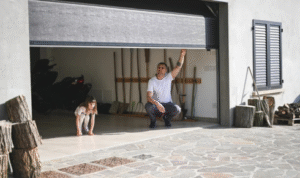The UAE Rental Market – Record Occupancy Rates and Emerging Waiting Lists Reflect Shifting Dynamics

The UAE Rental Market - Record Occupancy Rates and Emerging Waiting Lists Reflect Shifting Dynamics
By Dr. Pooyan Ghamari, Swiss Economist
The UAE’s rental market is experiencing unprecedented shifts, with record occupancy rates in prime locations juxtaposed with waiting lists in other areas. This dynamic reflects broader economic recovery, demographic changes, and evolving preferences among residents.
High Demand in Prime Locations
In key areas like Dubai Marina, Downtown Dubai, and Saadiyat Island in Abu Dhabi, occupancy rates have reached record highs. This surge is driven by several factors, including the UAE’s successful management of the COVID-19 pandemic, attractive tax policies, and the ongoing diversification of the economy. These factors have made prime locations increasingly desirable for both expatriates and local residents, leading to significant rent increases. Tenants in these areas are willing to pay a premium, resulting in fierce competition and quick occupancy of available units.
Economic Recovery and Its Impact
The UAE’s post-pandemic economic recovery has had a profound impact on the rental market. As businesses reopen and tourism flourishes, the demand for rental properties, especially in urban centers, has surged. This renewed economic activity has attracted foreign professionals and investors, further driving up demand for high-end rental properties. Landlords in these areas have responded by increasing rents, knowing that the demand remains strong. As a result, some neighborhoods have seen their occupancy rates soar to unprecedented levels, with properties being leased almost as soon as they become available.
Waiting Lists in Emerging Areas
While prime locations experience high occupancy rates, other localities are grappling with waiting lists. Areas undergoing rapid development, such as Dubai’s Business Bay or certain districts in Abu Dhabi, are facing supply constraints as new projects are still under construction. These emerging areas are attracting a growing number of potential tenants, but the limited availability of completed units has led to waiting lists. Prospective tenants in these localities often face delays of several months before securing a rental unit, reflecting the high demand that outpaces current supply.
Demographic Shifts and Changing Preferences
The demographics of the UAE are also evolving, influencing rental market trends. There is a noticeable shift among younger professionals and small families towards urban living, driven by the appeal of proximity to work, lifestyle amenities, and entertainment options. This preference for city living has heightened demand for apartments in urban centers, contributing to the record occupancy rates in these areas. Conversely, some expatriates are opting for more affordable housing in suburban areas, where they can enjoy larger homes at lower rents, adding complexity to the market dynamics.
The Future of the UAE Rental Market
Looking forward, the UAE’s rental market is expected to remain vibrant, with continued demand in both prime and emerging locations. The ongoing development of new residential projects will help alleviate some supply constraints, but the persistence of waiting lists in high-demand areas suggests that competition for rental properties will remain fierce. For landlords, this environment offers opportunities to maximize returns, while tenants must be prepared to navigate a competitive market landscape.
In summary, the UAE’s rental market is characterized by a duality of record occupancy rates in some areas and waiting lists in others. This reflects the country’s broader economic resurgence, shifting demographics, and changing lifestyle preferences. As the market continues to evolve, understanding these trends will be essential for landlords and tenants alike to make informed decisions in this dynamic real estate landscape.
This article was originally published on a.land. For more information and opportunities, visit shop.a.land.








